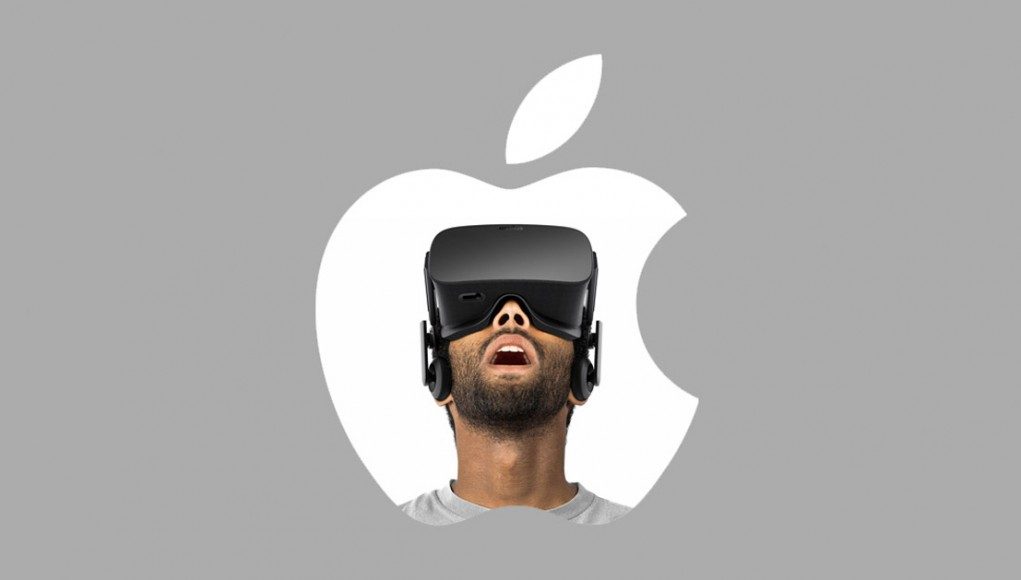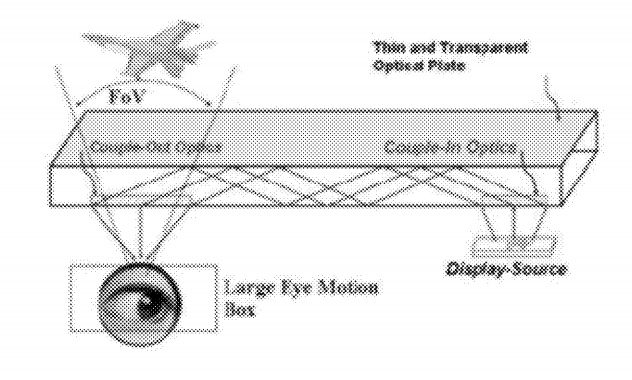Apple has just been granted another AR/VR related technology patent, to add to their growing list. In this case it’s a transparent, high field of view display which looks to be aimed at the augmented reality sector and, alongside other mounting evidence, could indicate Apple is preparing to enter the immersive technology race sooner rather than later.
Apple’s absence from the flourishing virtual and augmented reality stage is felt more strongly with every passing day. What’s more, anticipation that the company is working on ‘something’ AR/VR behind the scenes at Cupertino has been stoked by a series of company acquisition and staff hires. Most interestingly however are the trail of patent applications made by Apple, the latest of which has just been granted and describes a high FOV augmented reality headset display.
Originally filed back in June 2012, months before the Oculus was to make waves with its Rift DK1 Kickstarter campaign, this “continuation”, published by the US Patent and Trademark Office, extends an even older application, originally filed back in 2006. The patent is described as a “Peripheral Treatment of Head-mounted Displays” and details a form of AR display that seems to utilise technology similar to optical waveguide, a way to bounce light from a source to a destination with minimal loss of signal. In this case, the image is projected from a source off axis, reaching the eye via a transparent material (such as a visor or plate mounted over the eyes). Microsoft’s HoloLens uses a technique to display a virtual overlay onto the user’s view of the real world to create it’s so called “holograms”. Apple’s diagram, attached to the patent update, includes a label “Large Eye Motion Box”, perhaps indicating the display will feature a relatively high field of view for such a device.
One of their latest updates to the granted patent includes the description, as detailed by Patently Apple:
A computer program product, stored on a non-transitory machine-readable medium, for projecting a source image in a head-mounted display apparatus, the head-mounted display apparatus having a display operable to project a display image viewable by a user and a peripheral light element positioned to emit light of one or more colors in close proximity to the periphery of the display, the computer program product comprising instructions operable to cause a processor to: receive data representing a source image; generate, based on the data representing the source image, a display image; generate, based at least in part on the data representing the source image, a set of peripheral conditioning signals to control the peripheral light element; display the display image on the display; and use the set of peripheral conditioning signals to control colors emitted from peripheral light element.
This new patent could indicate Apple are continuing to work on a forthcoming immersive display device, a speculation strengthened by a series of reports that Apple are amassing a team of VR, AR, UI and UX experts in the field to work on such a device.

Notable stories from the last couple of years include Apple’s patent for a Gear VR like mobile VR device, the company advertising for a “Senior Software Engineer with “proven Track Record in Virtual and Augmented Reality“, their acquisition of AR-focussed company FlyBy and a high profile hire in the form of highly respected virtual reality researchers Doug Bowman. It’s hard to believe that, alongside Apple’s glaring absence from the VR/VR field, these stories don’t point strongly to a significant effort within the company towards R&D in the field.
Of course, patent applications – even those officially granted – don’t prove a company is actively working on anything. It’s common practice for large corporate technology enterprises to try to secure future IP ‘just in case’ they ever choose to pursue it. But alongside the other mounting evidence, it’s possible we could be looking at an immersive Apple device in some form sooner rather than later. One thing’s for sure, it won’t be a moment too soon.








